For a long time, Goebel Hummel figurines have been a popular among collectors. These miniatures typically show kids engaged in a variety of activities. Hand-painted with warm color schemes, Hummels are ceramic figurines. Almost every porcelain collector is familiar with the brand Hummel, and Hummel figurines are among the most popularly collected on the market for porcelain figurines. And because of that and the enormous number of figurines that the German business Goebels produced beginning in 1935, determining the value of each one piece requires more research than simply opening a price guide to see how much your Hummels are worth.
Table of Contents
History of Goebel and Hummel Figurines
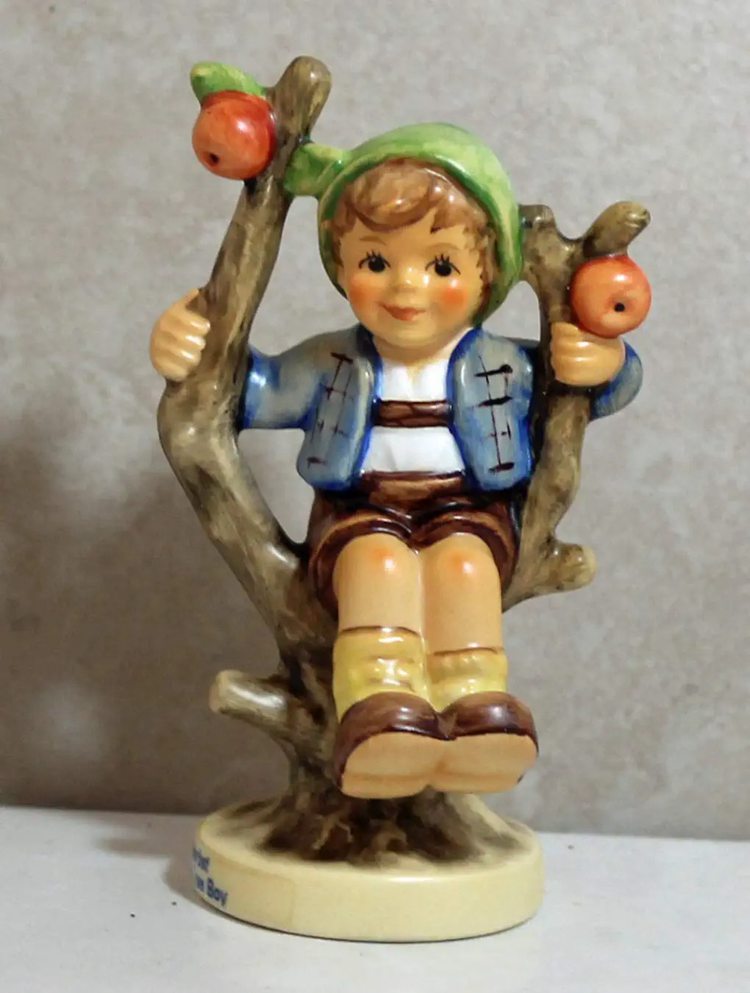
Goebel History
1879: Germany’s Oeslau (later known as Rodental) is where W. Goebel Porzellanfabrik first began producing porcelain. They had a small selection of products available at the time. Figures and dishes were the only things affected.
1931: The following items were added to Goebel’s production line in 1931: Vases, lamps, bookends, ashtrays, and candle sconces.
1934: Goebel began considering creating a line of figurines that embodied the tenderness and innocence of children. When Franz Goebel spotted Sister Maria Innocentia (Berta) Hummel’s sketches, he spoke with her about producing the Hummel line of figurines.
History of sister Maria Innocentia Hummel
Berta Hummel, sister of Maria Innocentia Hummel, was born. She enrolled in Munich’s Academy of Applied Arts when she was 18 years old. She joined the Siessen Franciscan Convent after graduating in 1931. She adopted the name Maria Innocentia at this point. Sister Maria Innocentia was able to make a postcard with children since the monastery placed a strong emphasis on the arts. Additionally, these works of art were included in art books. Franz Goebel came across Sister Maria Innocentia here.
1934: The first three clay sculptures, Little Fiddler, Bookworm, and Puppy Love, were created and finished up until 1934. Sister Maria Innocentia was shown these finished models. She then consented, on one condition, to Goebel using her pictures to design Hummel figurines.
1946: Health problems developed for Sister Maria Innocentia. Specifically, respiratory problems caused her death at the age of 37. Eventually, TB was identified as the cause.
It was made possible for figurine production to carry on following Sister Maria Innocentia Hummel’s passing by the outstanding collection of designs she left behind.
History of Hummel Figurine
1935: In 1935, Goebel Hummel figurines were introduced at the Leipzig Spring Fair
1939: The Goebel factory was only permitted to make Hummel figurines for export when the Second World War started by the German government. The German government seized control of the Goebel factory during this time of war and used it to manufacture crockery for the German soldiers.
1949: The figurines were once more popular in Germany after World War II. These miniatures were gifts brought home by American service members stationed in Germany. This made them more well-known than before and introduced them to American homes.
1971: Bells, Collector Plates, and Ornaments were added by Goebel to the collection of Hummel products.
1977: Goebel Collector’s club was established in 1977.
1989: The Goebel Collectors Club became the M. I. Hummel Club and was opened to enthusiasts from all around the world.
2008: Hummel figure production was discontinued by Goebel in 2008.
2009: After acquiring the brand rights, Manufaktur Rodental GmbH began making figurines on a slightly smaller scale.
Mark’s Timeline of Goebel and Hummel
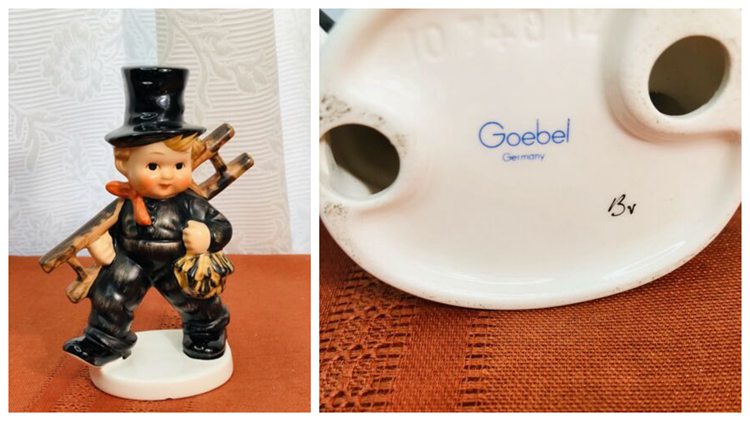
Fortunately, Goebel and Hummel’s markings have been thoroughly documented, and by cross-referencing a piece’s mark with the company’s catalog, you can effectively hunt down every item they’ve ever manufactured. Each genuine Hummel figure has one of these subtly different trademarks (TMKs) imprinted or written on the bottom.
-
(1935-1949) TMKs – 1
The “Crown Marks” of Goebel and Hummel have a mark with the initials WG beneath a stylized crown in tribute to William Goebel, the founder of the Goebel Company. Also at this time, the M.I. Hummel signature started to appear at the bases of the figures. Into the twenty-first century, this trait would remain.
-
(1950-1959) TMK-2
Hummel’s introduction of their bee design markings during the 1950s helped define the decade. These stamps feature a variety of bees sitting inside a V in numerous distinct styles. From 1956 through 1959, the business actually altered the size and shape of the bee.
-
(1960-1972) TMK-3
These so-called “Stylized Bee Marks,” which emerged in the 1960s and the first part of the 1970s, are regarded as close modifications of the original bee marks. The written inscription W. Germany, which indicates the region of the divided nation the company operated in, is frequently included on these marks.
-
(1964-1972) TMK-4
The TMK-4 markings can be found next to the “Stylized Bee” variations. Only the three-lined inscription that reads “by / W. Goebel / W. Germany” inscribed beside the mark distinguishes these markings from the related TMK-3 series.
-
(1972-1979) TMK-5
Because it was the last series to include the company’s notorious bee, collectors regard to this 1970s series as the “Last Bee Mark.” During this time, the business started to use its name more prominently, emphasizing the Goebel brand by adding an illustrated bee over the final E of the business name.
-
(1979-1990) TMK-6
Of all the markers, the TMK-6 series is the most straightforward. The only thing left to claim ownership of the figure in this case after the bee and the ‘v’ were both removed was the Goebel family name.
-
(1990-1999) TMK-7
The seventh generation of the company’s renowned insignia arrived after Germany’s unification with the fall of the Berlin Wall. This series added the original crown beneath the business’s emblem as a tribute to this momentous unity.
-
(2000-2008) TMK-8
The bumble bee made a comeback and the crown gave up its throne in the final Goebel’s official mark. In spite of not being affiliated with the Goebel Company, another business has carried on producing Hummel figurines under a trademark that has both M.I. Hummel’s signature and the bumble bee. In this way, all figurines made by Goebel-Hummel are regarded as having been created before 2008.
Identification of Original Goebel Figurines
M.I. Hummel’s alluring designs inspired numerous imitations, knockoffs, and items based on her drawings. Along with the items produced during World War II, Asian makers have inundated the market with duplicates and reproductions that are significantly less expensive.
How can you determine if your Hummel or Goebel Figurines is the real deal or just a knockoff?
-
TMK Mark or Goebel Trademark
To begin with, check the bottom of your Hummel figurine for the Goebel trademark, commonly known as a TMK.
The corporate emblem is imprinted on each figurine made by Goebel. It is simple to tell how old your Hummel is because different logos were used at various times.
Goebel began with TMK-1 (the oldest) and progressed all the way to TMK-8 (newest). It suffices to state that your Hummel is vintage and worth more if you own a TMK-2 or TMK-3.
The earliest designs include TMK-1 through TMK-3, the middle ages had TMK-4 through TMK-6, and the most recent models have TMK-7 through TMK-8.
-
HUM Numbers and other Makings
The so-called Hummel or HUM number is affixed to each figurine. Its model is indicated by a number with 1 to 4 digits. Adventure Bound, for instance, is #347. The HUM of figurines that come in various sizes also has designators connected to it.
These numbers serve as a lasting identifier because they are typically cast with the figurine or etched into the fragile porcelain. You may simply find out the name of the figure and further details about it by cross-referencing the HUM number online.
On Hummel and Goebel Figurines, you can also discover the following markings:
-
Stamped decoration designator
After the HUM/size number, a painted or stamped decoration designator is typically added.
-
Identify factory control number
Identifies the person who put together the Hummel figurine with a small, hand-painted or incised two-digit number called the “factory control number.”
-
Underside Number
Used throughout the eras to denote things like the production year or release year is the underside number. There are times when it is simply another manufacturer control number.
-
Forgery Signage
When two Hummel figurines are side by side, it’s extremely simple to distinguish between the two if you know what to look for. When determining if your Hummel is genuine or not, look for the following in addition to its TMK logo and identification symbols, as well as the distinct design and dimensions of Maria Innocentia’s original drawings:
-
Features
There could be aspects on the phony figure that are absent, added, or moved. For instance, the face is expressed differently, the head is turned to the opposite side, or a grassy area is missing.
If at all possible, verify that the features of your figurine match those of an authentic original.
-
Color Scheme
Real Goebel-produced Hummels adhere to a certain color scheme chosen by Maria Innocentia. It is simple to recognize a replica since fake Hummels typically have colors that are similar but not exactly the same.
Check your figurine for any off-colors and tints. Refer to a genuine Hummel’s colors if you can. Not all of the figurines must be identical. The color scheme is recognizable in all genuine Hummel figures.
-
Weight
Lastly, weight Contrary to popular belief, fake Hummel sculptures frequently weigh less. A special porcelain mixture is used by the Goebel firm to produce a product that has a substantial feel. Cheaper materials, such as plastic, plaster, or chalk, are frequently used in copies.
Unfortunately, you won’t have a real Hummel figurine if it’s constructed of plastic.
Value of Goebel Figurines
Most Goebel figurines cost between $50 and $75. A few hundred dollars can be spent on some models. The price of a special individual Hummel figurine might reach the tens of thousands of dollars. You can use our Goebel Figurine Guide as an excellent starting point, but keep in mind that costs might vary significantly based on a number of circumstances.
Value-Influence Factors
-
Size and complexity
Larger and more complicated models are typically more expensive.
-
Rarity
While certain Goebel Figurines were produced in restricted quantities or special series for decades, others were not. The latter are undoubtedly more valued.
-
Age
Antique Goebel are typically worth more. The TMK marking design can be used to estimate age. The value of figurines from the late 19th century is higher than that of contemporary versions since they are more difficult to find.
-
Demand
Some figurines, such as Merry Wanderer #7 and Stormy Weather #71, are just more well-liked than others.
-
Condition
Naturally, any blemishes, scratches, fading, etc. will lower the value of the figurine. An unblemished figurine in its original box may be worth ten times as much as the same model without it.
-
Figurine Series
A figurine associated with a well-known series will be worth substantially more than an unrelated one, with Hummel figurines commanding the highest prices.
Collection of Goebel Figurines
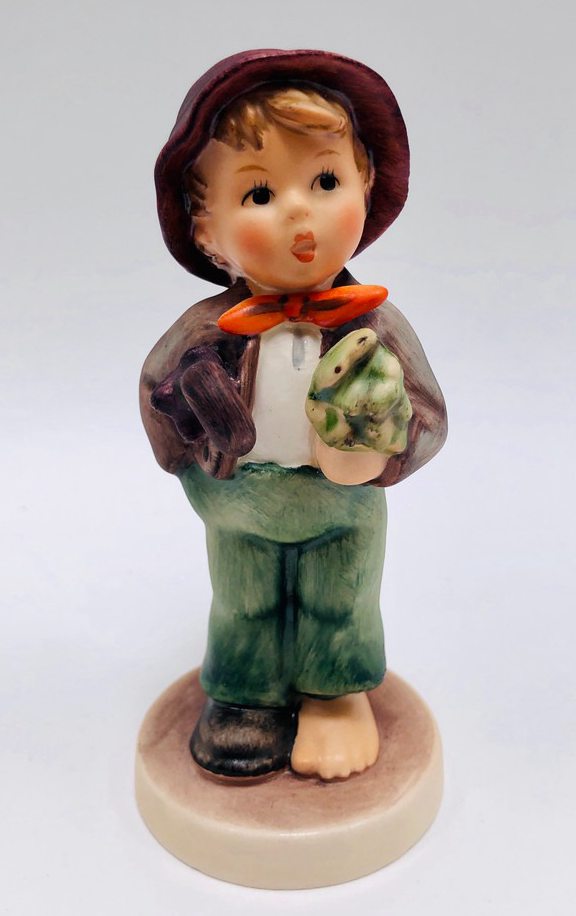
Since the company has a long history in the porcelain creative community, those who are interested can go through a considerable catalog. To create their well-known items, Goebel frequently collaborated with outstanding designers and artists, so their collection truly reflects a diversity of creative expression and cultural backgrounds. Here are a few of the numerous series for which Goebels is best known.
-
Goebel Unites with Walt Disney
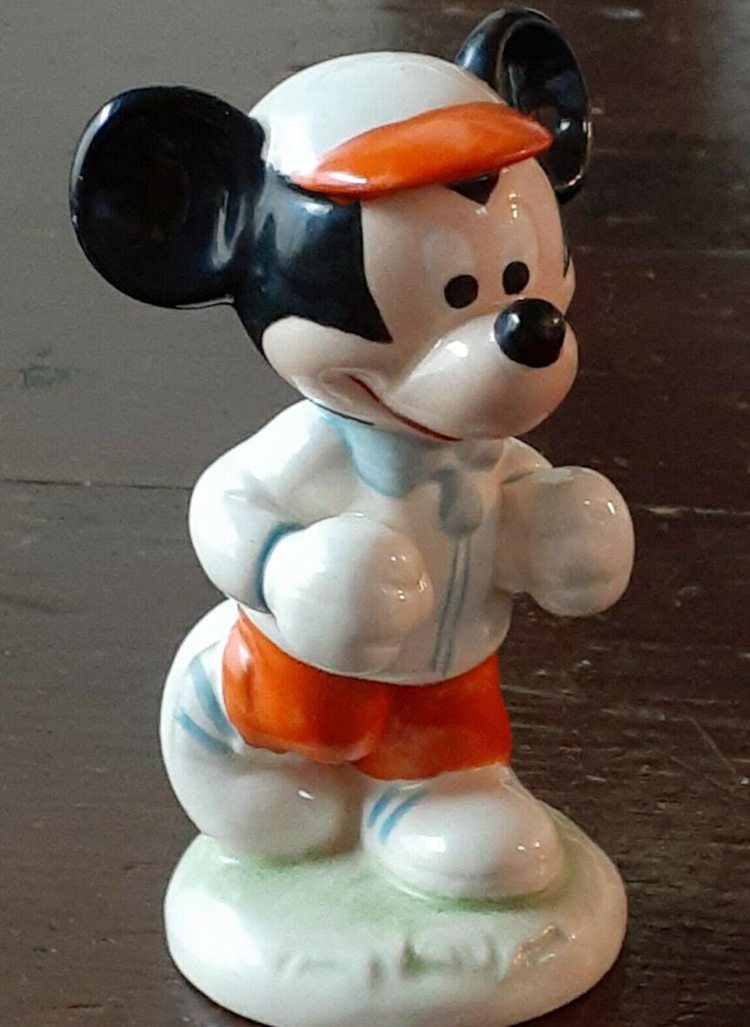
Walt Disney gave Goebel the authorization to market Bambi and her forest buddies as porcelain figurines in 1950. This would increase to incorporate additional well-known Disney characters, such as those from Snow White and the Seven Dwarves. One Goebel’s Disney figurine collector even created his own digital collection of the company’s figurines.
-
Goebel Acquires Schaubach Kunst’s Designs
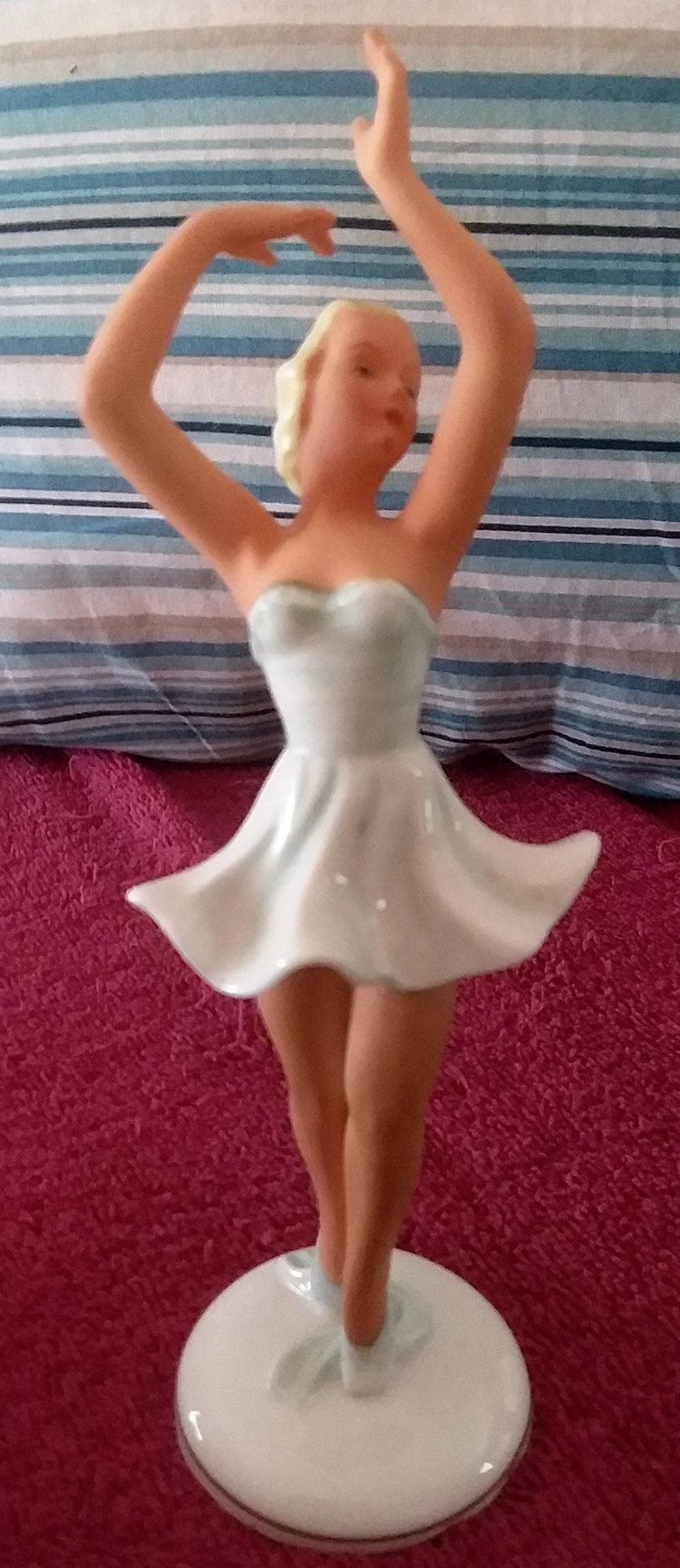
Initially released in the middle of the 1950s, Goebel’s Schaubach Kunst figurines. The old Wallendorf Porcelain Company’s original plans were used to make them. Even though this line was only produced from 1950 through 1975, it produced a lot of delicate, lovely items. Their flowing models took their cues from female dancers and athletics.
-
Goebel’s Hummel Figurines
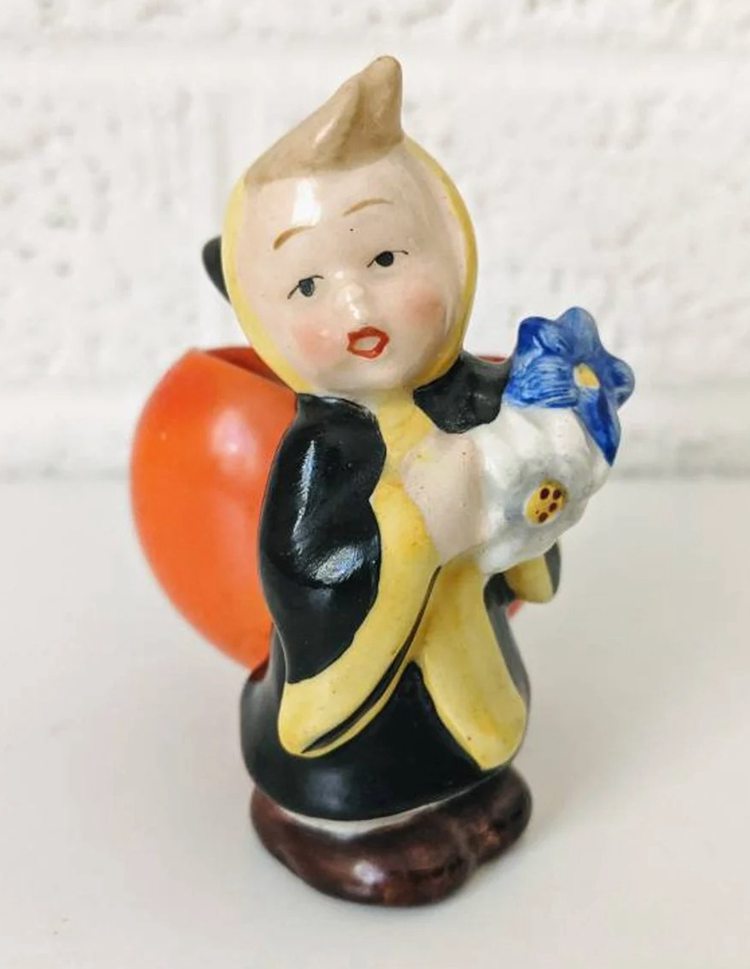
Franz Goebel and a Bavarian nun named Maria Innocentia Hummel collaborated to produce the Goebel’s Hummel figurines. These figurines, whose production began in 1935, contributed to Goebel’s emergence as a formidable rival in the market for fine porcelain. Items from the Hummel line are believed to be worth up to $5,000.
-
Goebel’s Animal Figurines
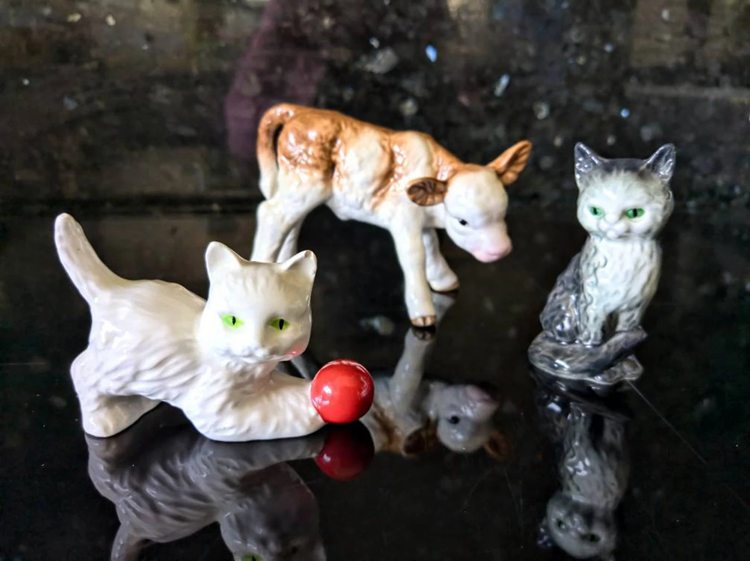
Although the makers had experience making human figurines, their numerous animal series demonstrates just how experienced they were at turning animal resemblances into porcelain. The birds and dog’s series are two of the company’s most extensive ranges. Here, the firm played with scale and scope, producing some miniatures up to or taller than a foot. These lines did eventually expire, but the business still offers Bird of the Year and Special Dogs, two modern adaptations of each.
Most Valuable Goebel Figurines
-
Apple Tree Girl and Apple Tree Boy (1960) sold for $22,425.00
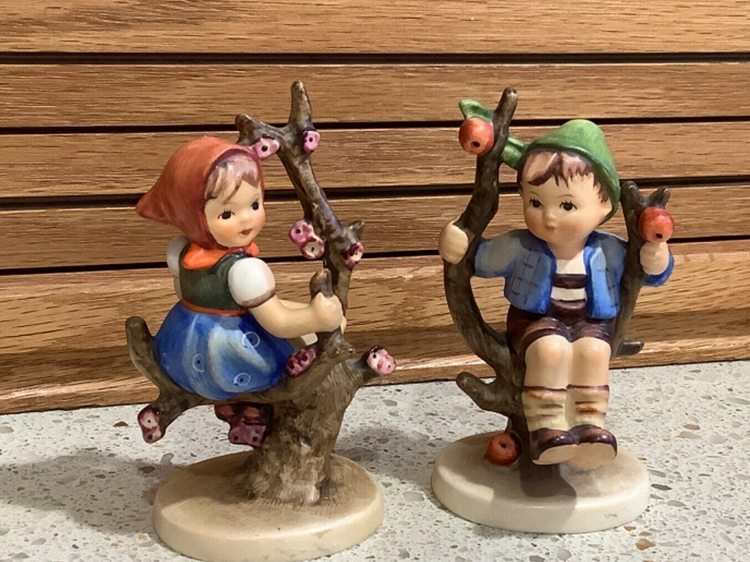
-
Merry Wanderer (1935) sold for $1,700
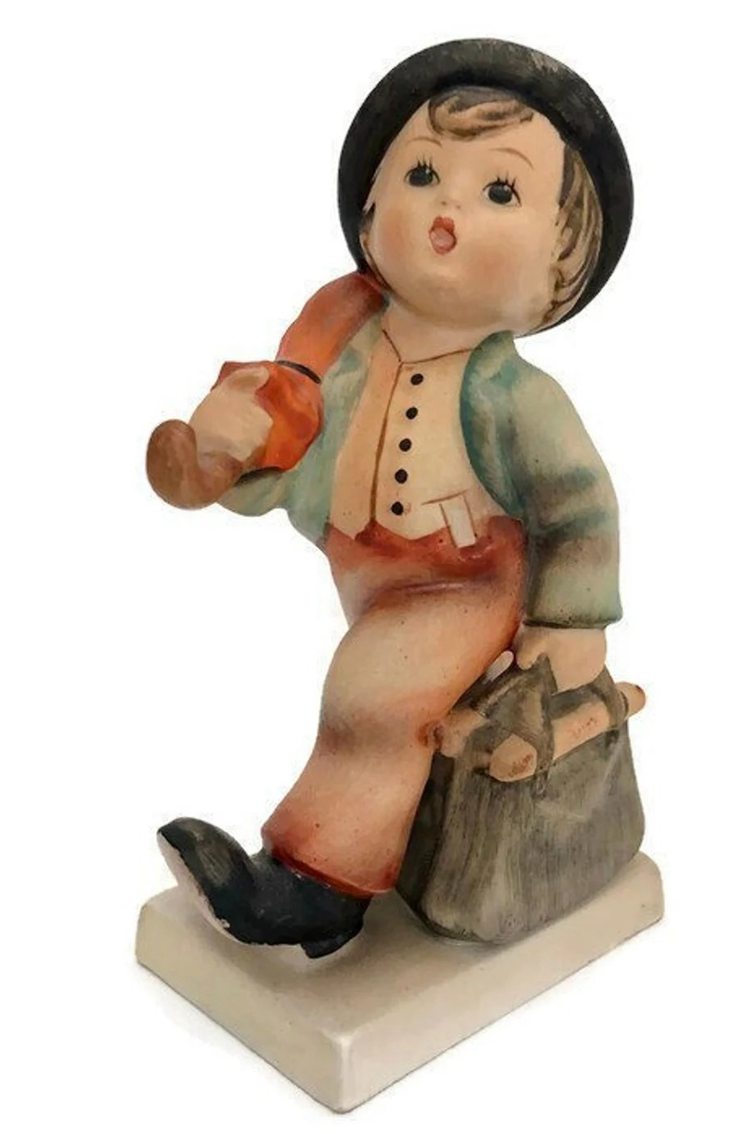
-
Letter to Santa Claus (1956) sold for $9,297
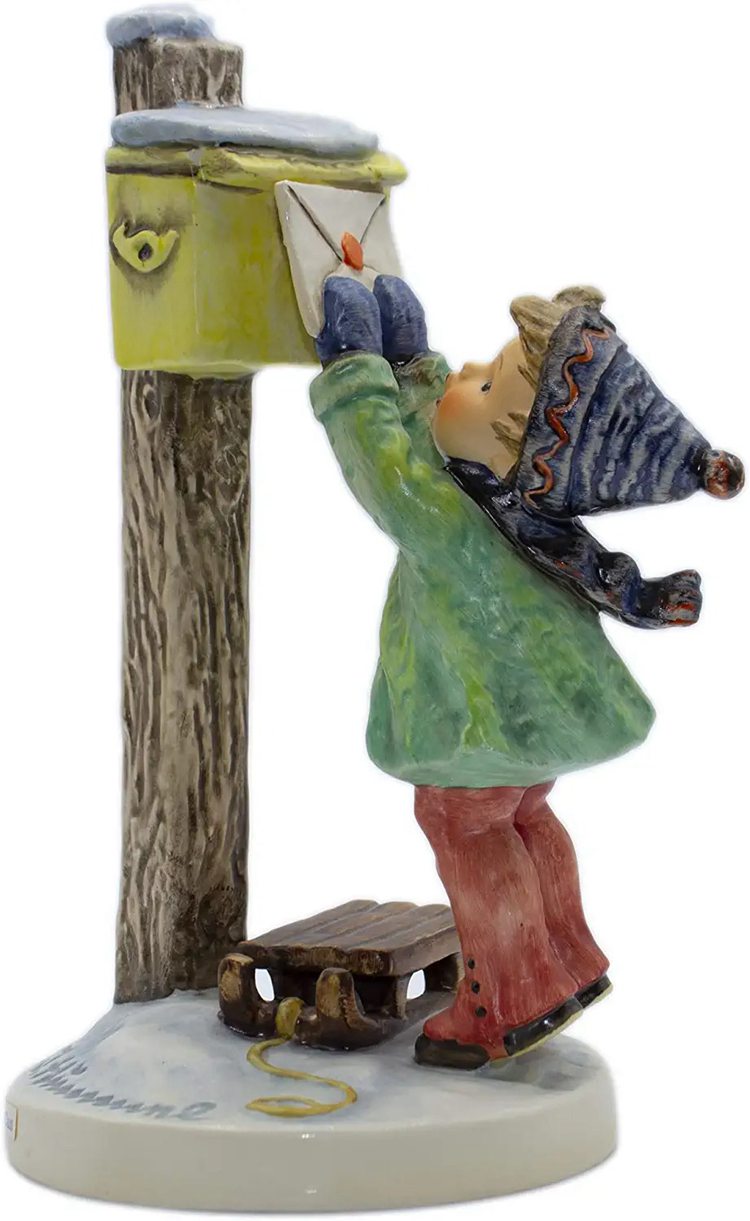
-
Adventure Bound and Group Hummel Figurines (1955) sold between $3,750 – $3,900
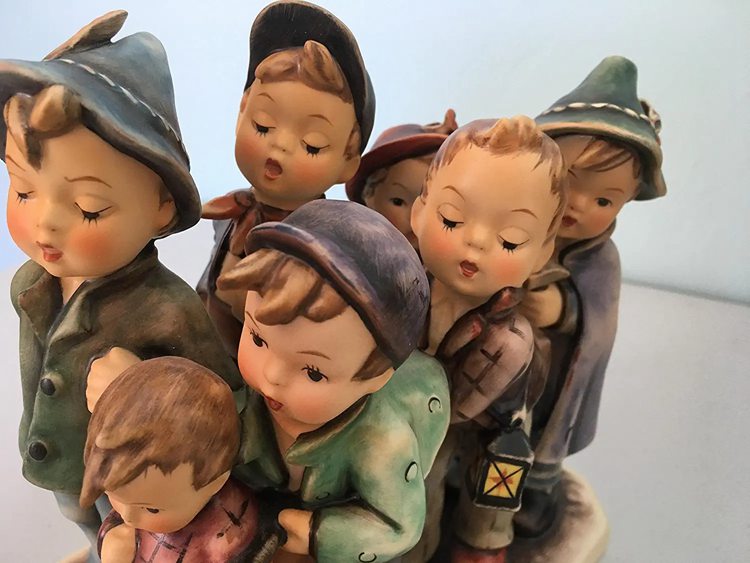
-
Ring Around the Rosie (1960) sold for $2,990
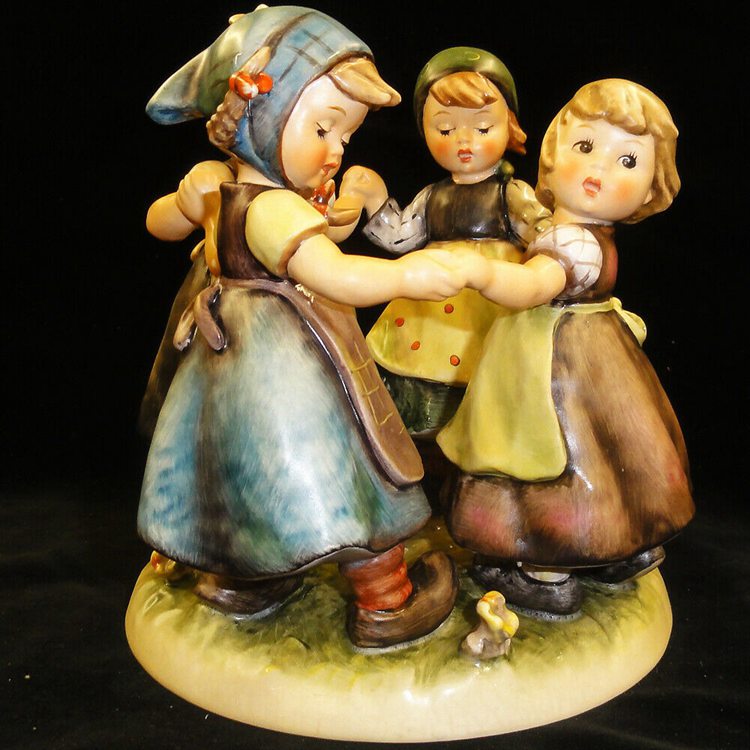
-
Hum 1 – Puppy Love (c.1935) sold for $2,999.95
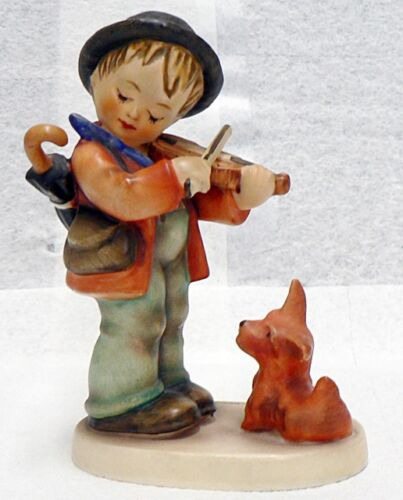
-
Hum 2 – Little Fiddler c.1935 (1985) sold for $1,201.50
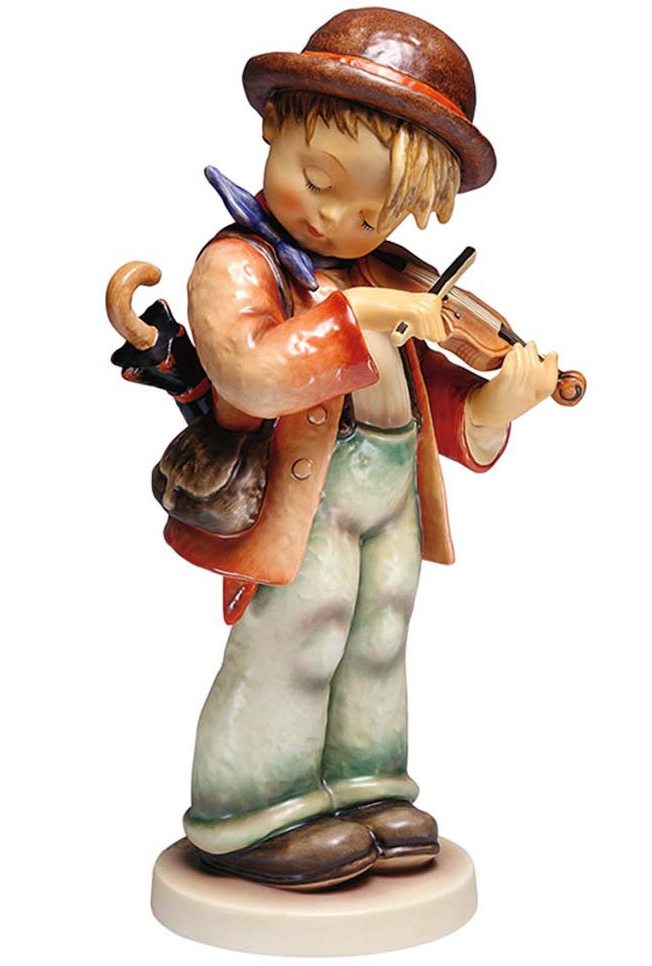
-
Hum 3 – Book Worm 1935 sold for $7500
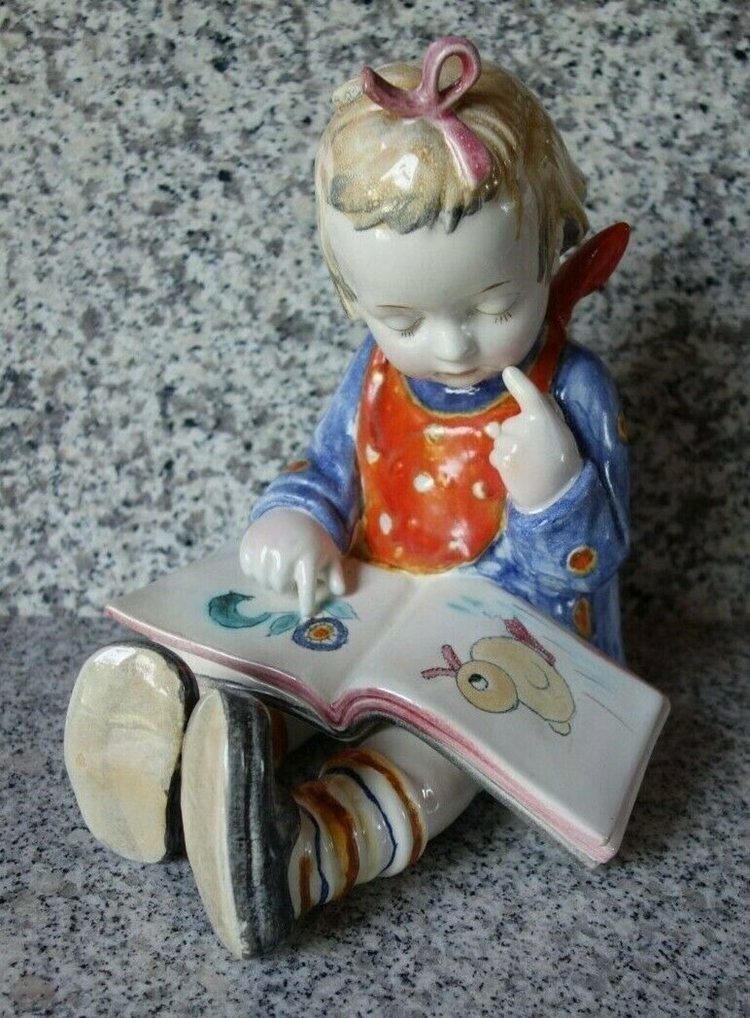
-
Congratulations c.1935 – 1963 (1935) sold for $18,000
-
Hum 32 – Little Gabriel (1935-1950) sold between $1000 t- $1250
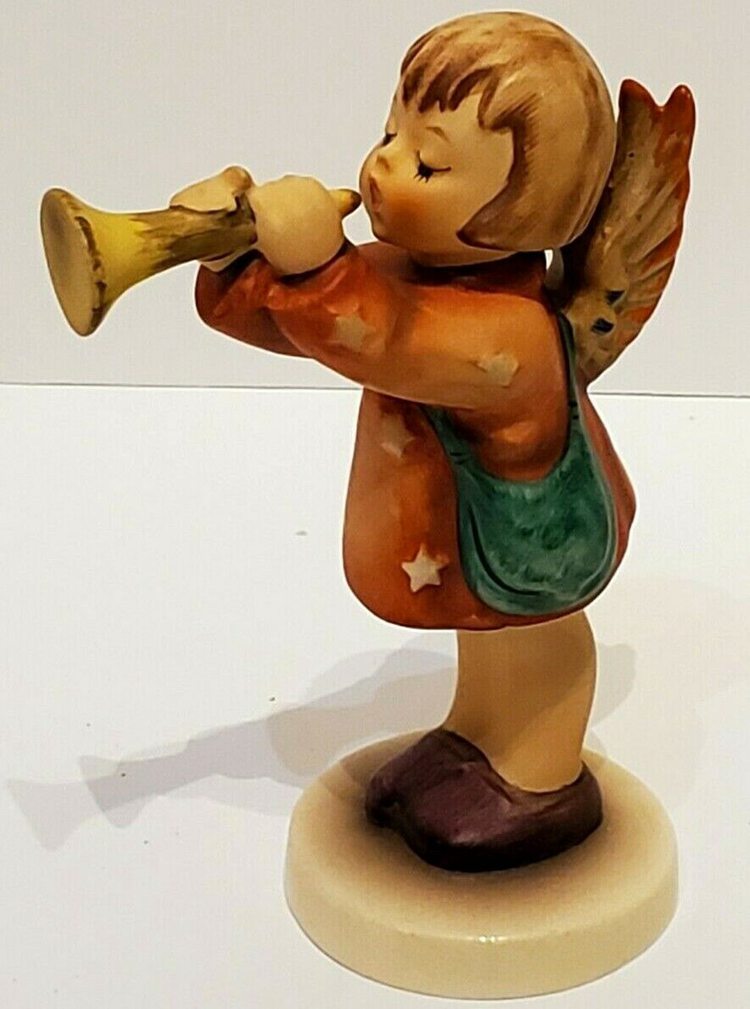
-
Hum 42/I – Good Shepherd (1935-1963) sold between $3000-$4000
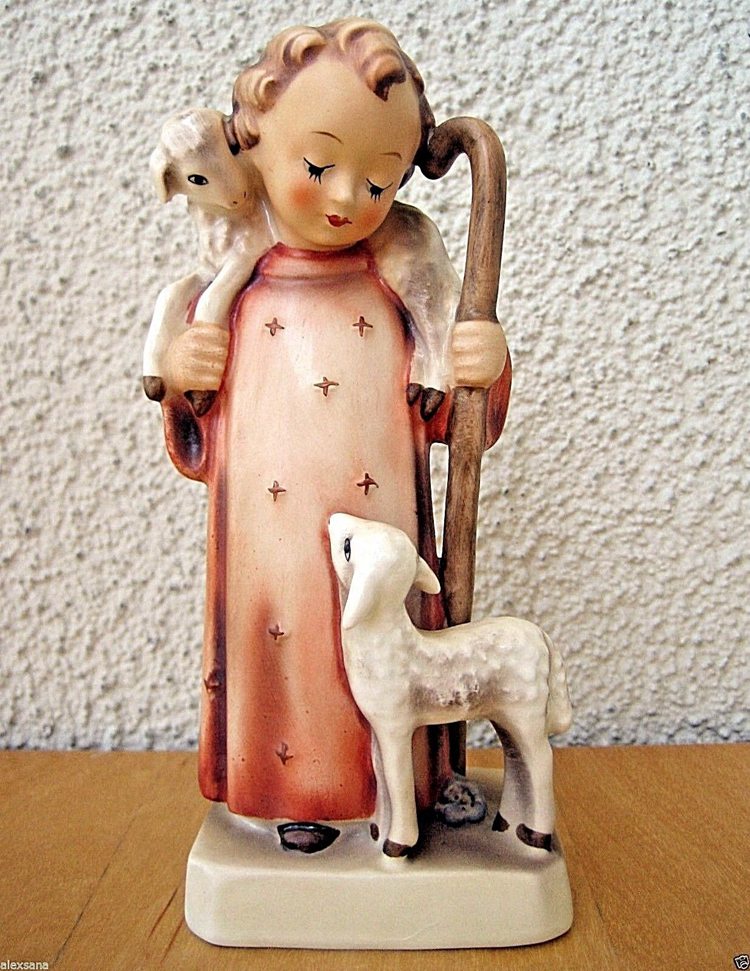
-
Hum 47/III (2000) – Goose Girl sold for $2000

-
Hum 84/V – Worship (1935-2000) sold between $755 – $1500

-
Hum 89 – Little Cellist (193) sold $800
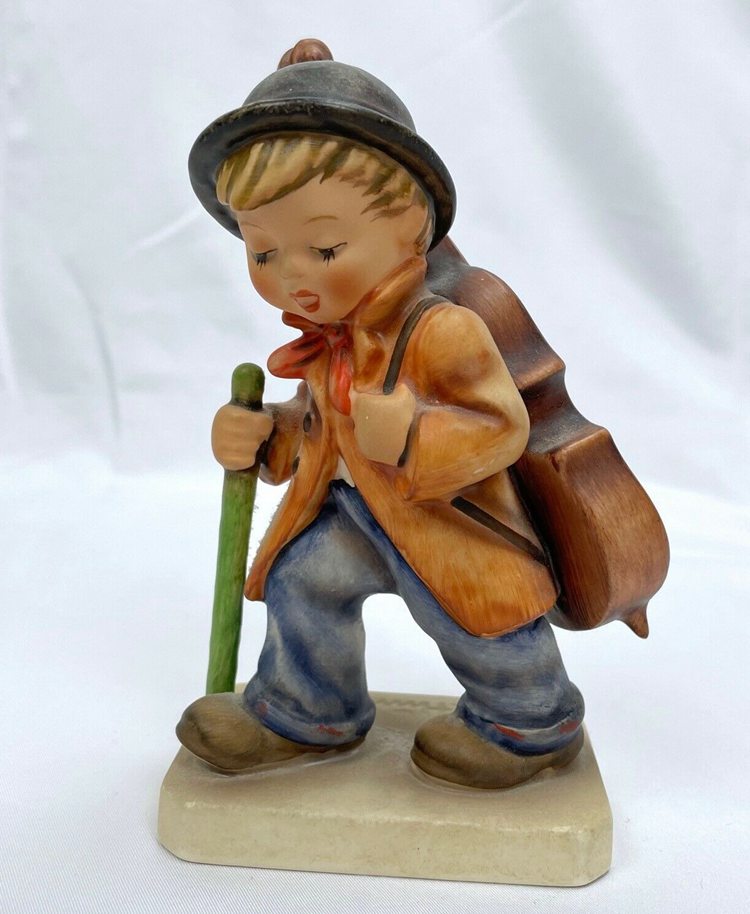
Hummel’s Figurines worth in 2022
As more and more collections are being made available on the secondary market, prices have fallen recently. For instance, in the 2010s, a normal figure’s average resale price was around $80, while in the 2020s, a lot of 12 of the same sort of figurines sold for $80.
It might be interesting to search into those highly prized editions that can still sell for a lot of money at online auctions if you are shrinking your Hummel collection.
We have collected the verifiable online or auction sales of Hummel’s Figurines that are still worth to buy in 2022:
-
Hummel Figurines sold above $100
Some of the Hummel Figurines that recently sold for over $100 include
- Stormy Weather
- Worship
- Little Concerto
- Good Shepard
- Behave
- School Boys
- Pleasant Journey etc.
Hummel Figurines sold between the range of $200-$300
Furthermore, some of the Hummel Figurines that recently sold in the $200 to $300 range include:
- Heavenly Protection
- School Boys
- Bavarian Cheer
- Land in Sight
- Pleasant journey
- Scooter Time
Hummel Figurines sold above $300
Moreover, Hummel Figurines that recently sold for over $300 include:
- Teeter Totter Time
- Ring around the Rosie
- Can I Play
- Ring around the Rosie
Where to buy these Goebel Figurines Online?
Searching online is your best option if you need to find one immediately. Consider the following sites:
- e-Bay– The Goebel Figurines of your dreams can be easily found on eBay, one of the greatest sites to find beautiful Antique collectibles. It’s also ideal if you’re considering selling because they provide a very user-friendly e-commerce feature and can reach a sizable global audience.
- Ruby Lane– Since their auction stream is sourced via more conventional methods, Ruby Lane is, it must be said, a little more constrained in the number of Goebel Figurines that are offered at once. It’s a good idea to constantly checking their inventory, though, as they are one of the biggest online auction houses, to see if they have what you’re searching for posted.
- Etsy– Since people frequently discover these Goebel Figurines in their grandparents’ homes across the nation, internet marketplaces like Etsy are among the greatest places to find a ton of these pieces on sale.
Frequently Asked Questions
Why are Hummel collectibles so pricey?
As the generations who collected Hummel die off, leaving behind thousands of their depreciating-value dust-collectors, the supply of Hummel only continues expanding. Lladro figurines can be rather expensive when compared to the other treasures described above.
What’s the value of my Goebel Hummel?
Depending on their condition and whether or not they still have their original boxes, Hummel plates can have a wide range of market values. The price of a Hummel plate can range from $10 to $200. Thirty-one plates and plaques made of Hummel porcelain sold through Gray’s Auctioneers for $50
What does TMK on a Hummel stand for?
The Modern Hummel Goebel Mark, or TMK-8
The trademark underwent yet another update in 2000. The name Goebel is the only thing that is still present, but they have added a massive Bumblebee. The purpose of this bumblebee is to pay tribute to Sister Maria Innocentia Hummel. Today, people are still using this trademark.
Vintage Goebel Figurine Collection
The limitless selection of subject and designs that are accessible is the best benefit of collecting vintage (and contemporary) Goebel figurines. The Goebel Porcelain Company has the ideal figurine for you, whether you enjoy the outdoors, children with rosy cheeks, Disney films, or something else entirely. Learn more right now about valuable antique figurines.
Summary
Sister Maria Innocentia was a diligent designer who paid close attention to the small details. Before spending money on a piece, consider the quality, color gradient, marks, and design if you’re a collector of Hummel figurines.
Matte paints are questionable since Hummel sculptures are painted in glossy pastel hues. Regardless of the period of production, every Hummel figurine of the same model has a unique expression. The proportions of Hummel figurines are distinctive, and you can compare them in their database.
In the end, having a Hummel figurine in your collection valued by a professional is the only surefire method to know for sure that it is authentic. Taking this extra step can give you and a potential client the greatest peace of mind, regardless of the marks or HUM numbers that you identify on the Hummel.
Our Takeaway
If you recently purchased or are considering buying an antique Goebel figurine. Whatever the situation, you can find out how much an antique Goebel figurine is worth by using our guide on identifying and appraising them. However, we strongly advise you to visit a professional appraiser if you want to fully understand the worth and value of your antique Goebel figurines.

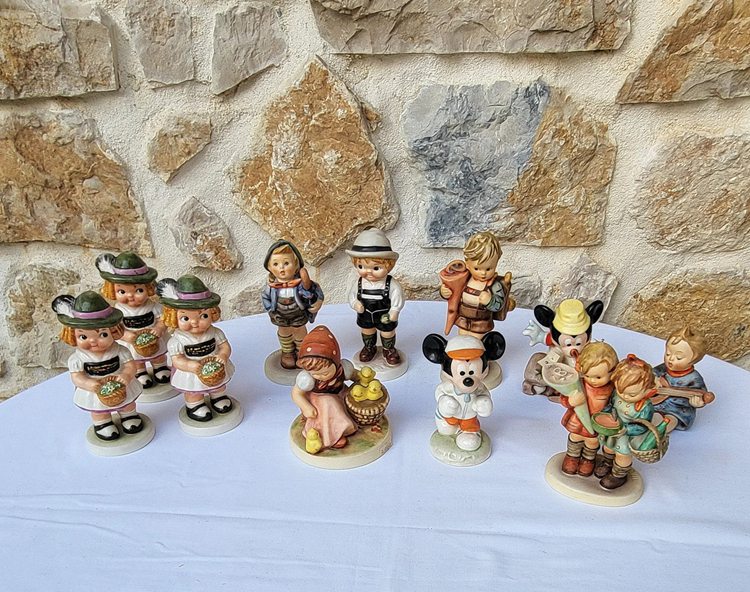

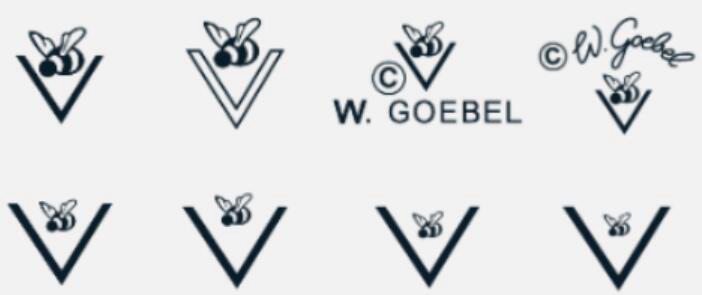




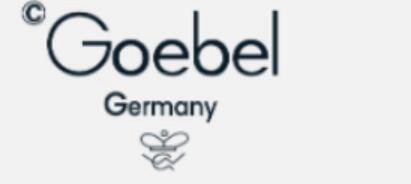
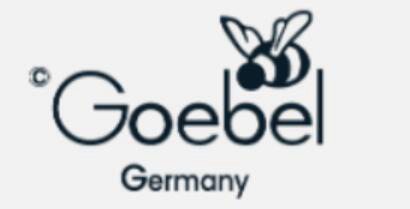
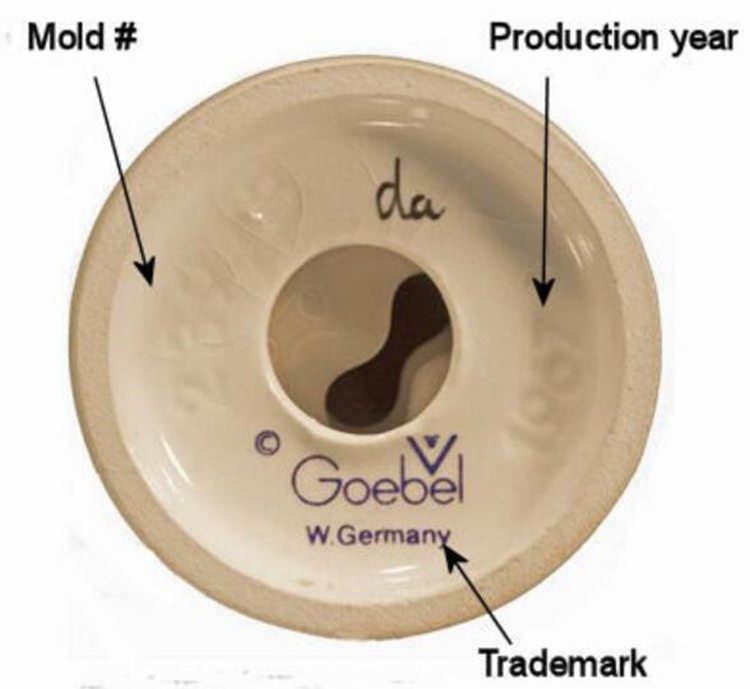
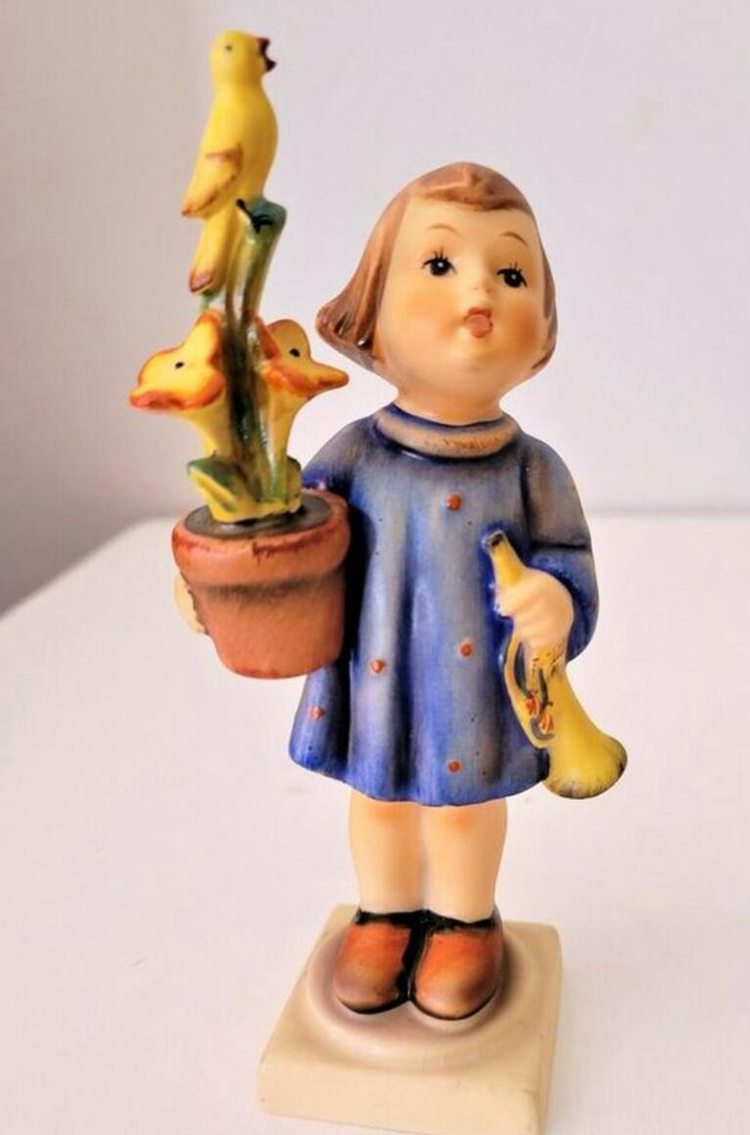




![Where To Sell Antique Furniture In 2022 [Ultimate Guide]](https://www.jacquelinestallone.com/wp-content/uploads/2022/09/Etsy-Your-Place-To-Buy-And-Sell-All-Things-Handmade-600x450.jpg)


